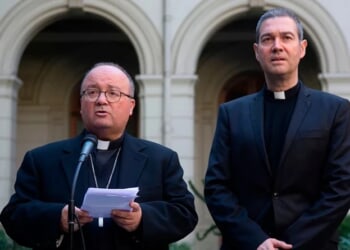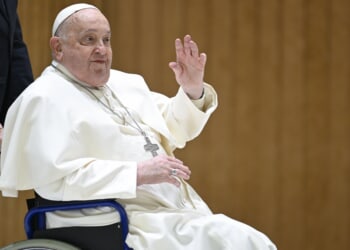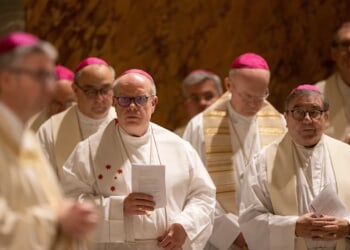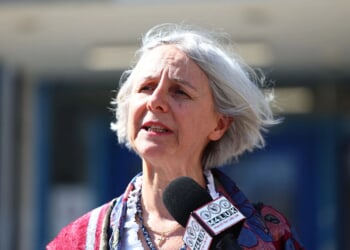Vatican City, Apr 25, 2025 /
11:15 am
Pope Francis’ tomb is made of Ligurian (Italian) marble with the sole inscription “FRANCISCUS” and a reproduction of his pectoral cross, according to new details released by the Vatican.
The burial place is located in the niche of the side aisle, between the Pauline Chapel (Chapel of Our Lady of Health of the Roman People) and the Sforza Chapel in St. Mary Major Basilica. It is also located near the altar dedicated to St. Francis.
Work to receive Pope Francis’ coffin began a few days ago, fulfilling the pontiff’s wish for a simple burial in this church dedicated to the Virgin Mary.
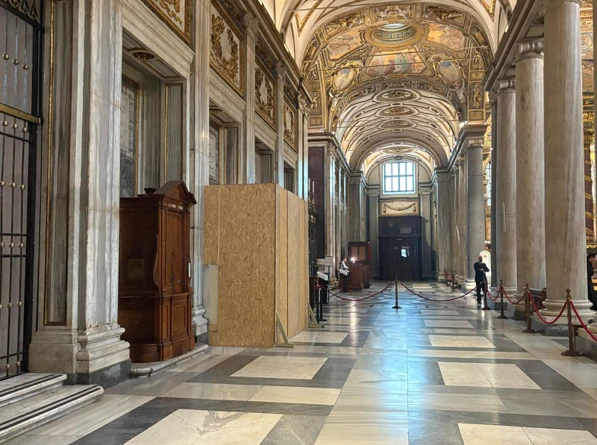
In his autobiography, “Hope,” published earlier this year, Pope Francis made it clear that his burial place upon his death would be St. Mary Major Basilica.
“The Vatican is the home of my final service, not that of eternity. I will be in the room where the candelabras are now kept, close to that Queen of Peace, whose help I have always asked and by whom I have let myself be embraced during my pontificate more than a hundred times,” he stated.
“I thought they were going to bury him inside the crypt of the basilica, but it’s here,” said Valentina, one of the members of the faithful who visited the church.
She’s from Rome and pointed out that, with this gesture, Pope Francis wanted to seal his relationship with the Eternal City of which he was bishop.
Beside her, her husband, Francesco, said that during the Mass they attended a few minutes ago, they heard “the sounds of the workers at work.”
“The pope wanted to be buried at ground level and without ornamentation. It’s another example of the humility he has demonstrated throughout his 12 years of pontificate,” she noted.
The tomb is very close to the chapel of the “Salus Populi Romani” (“Health of the Roman People”), the Marian devotion where the pope regularly went to pray.
Antonieta, who said she was the same age as Pope Francis at 88, also came to the church to pray for the pontiff before a copy of the image of their shared, favorite Marian devotion.
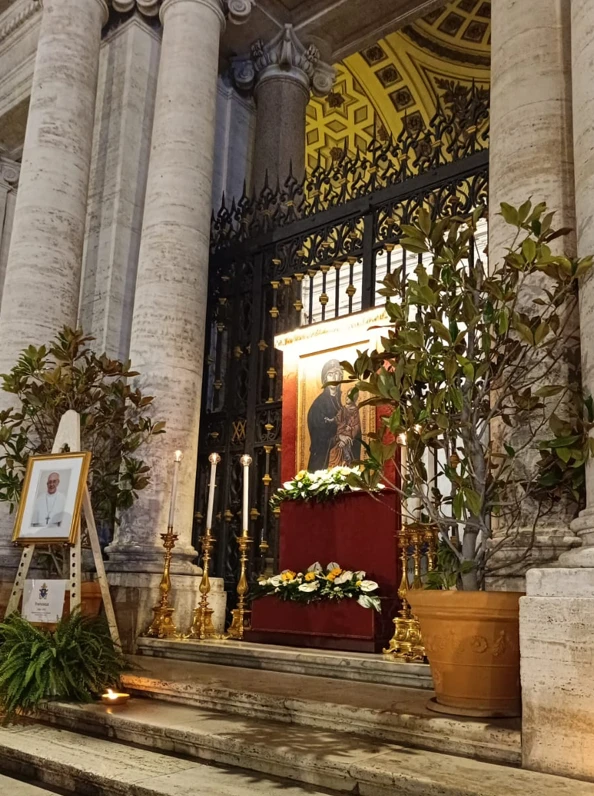
The Holy Father entrusted all his apostolic journeys to Mary under this title every time he left from or returned to the Vatican.
He confided his concerns to her but also his physical pain. During the four times he was admitted to Rome’s Gemelli Hospital, he wanted to offer his suffering to the Virgin Mary. He also did so at other difficult times, such as the pandemic.
“He had a great devotion to this church, and it wasn’t unusual to see him praying before its icon. His devotion is contagious and now, although I live near the Vatican and used to go to St. Peter’s, I often come to Mass here,” Antonieta said.
(Story continues below)
Subscribe to our daily newsletter
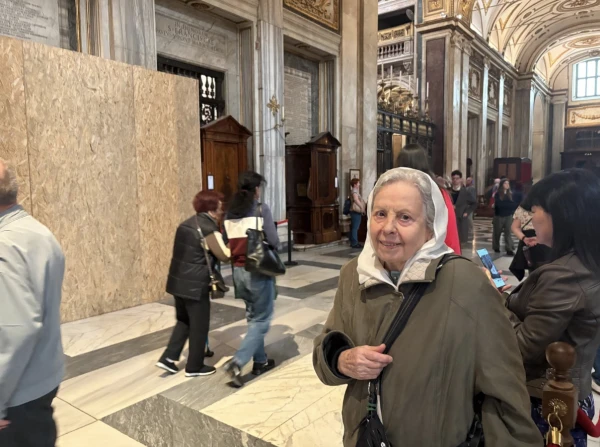
For Antonieta, also an octogenarian, the three kilometers (close to two miles) separating the Vatican basilica from St. Mary Major are no problem. The cortege accompanying the pope’s coffin will travel that same route after the funeral on Saturday, April 26.
But in addition to housing the Byzantine icon “Salus Populi Romani,” few know, for example, that St. Ignatius of Loyola also chose St. Mary Major to celebrate his first Mass as a priest. He later founded the Society of Jesus, for which this basilica was very important. In the aftermath of the Protestant revolt, the Marian image became a symbol of identity that clearly demonstrated adherence to the pope.
St. Mary Major Basilica also houses the remains of the architect and sculptor Gian Lorenzo Bernini, one of the greatest exponents of Baroque art, and Pauline, the sister of the French emperor Napoleon Bonaparte. Starting Saturday, they will share their final resting place with Pope Francis.
This story was first published by ACI Prensa, CNA’s Spanish-language news partner. It has been translated and adapted by CNA.







